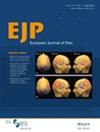The measurement of “high-impact chronic pain”: Limitations and alternative methods
Abstract
Objective
Chronic pain is known to be an important construct in clinical practice and a particular form of chronic pain, high-impact chronic pain (HICP), has gained recent interest and attention by pain clinicians, epidemiologists, and clinical researchers. The purpose of our Topical Review is to describe the historical development of measures of HICP and to explore the psychometric properties of HICP as well as to present alternative measurement methods.
Methods
We identified strengths and weaknesses of the psychometric characteristics of HICP measures. Limitations of existing HICP measures were discussed and summarized and alternatives to current methods were proposed.
Results
HICP operational definitions show variability across studies. All definitions cannot be correct, but which ones are incorrect cannot be determined as there is no gold standard. Random measurement error and recall bias are among the other limitations of current HICP measures. Model-based definitions of HICP, the discrete (for epidemiologic applications) and continuous (for clinical applications) latent variable models are discussed as likely superior alternatives to current methods.
Conclusions
Limitations of existing HICP methods are discussed and alternative development approaches to HICP measures are presented. The use of either discrete or continuous latent variable models would improve upon the psychometric characteristics of current HICP evidence. Examples are used to illustrate the benefits of latent variable models over traditional observed variable conceptualizations as the measurement of HICP continues to develop.
Significance Statement
This work takes the position that current methods of measuring high impact chronic pain (HICP) likely contain substantial error. We have endorsed an alternative approach for several psychometrically grounded reasons. We recommend that future work consider the discrete latent variable framework for dichotomous measures of HICP and the continuous latent variable framework for continuous measures of HICP. The paper provides illustrative examples of these methods for a different patient reported measure that is lacking a gold standard, much like HICP measures.

 求助内容:
求助内容: 应助结果提醒方式:
应助结果提醒方式:


